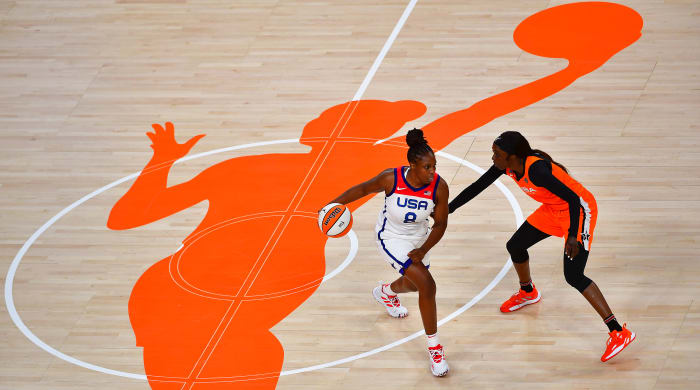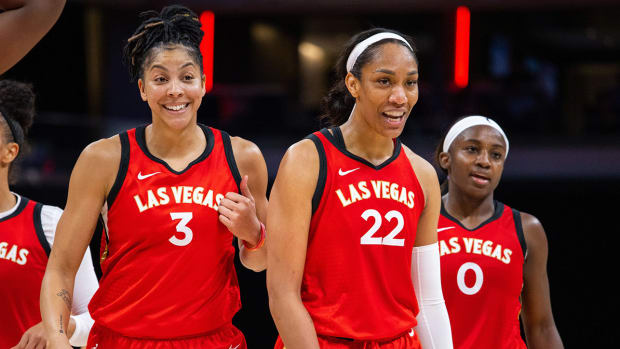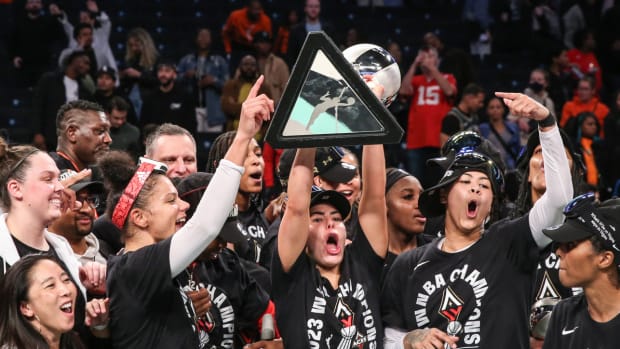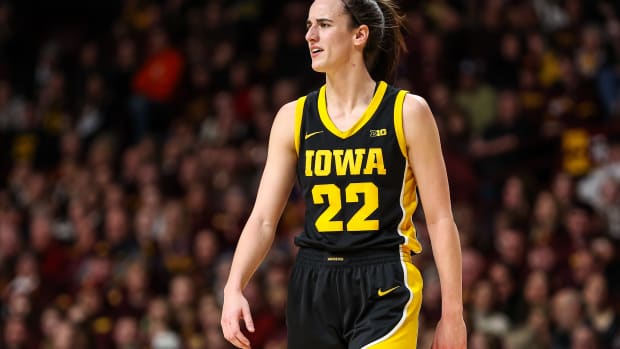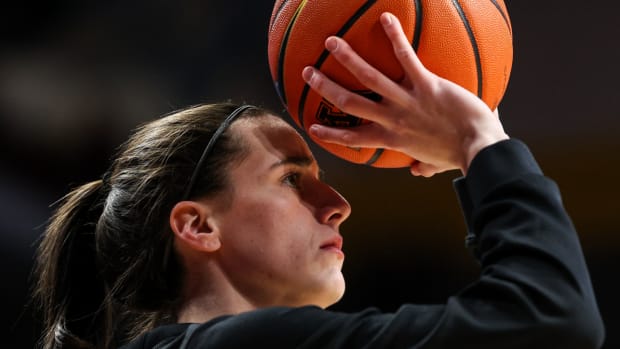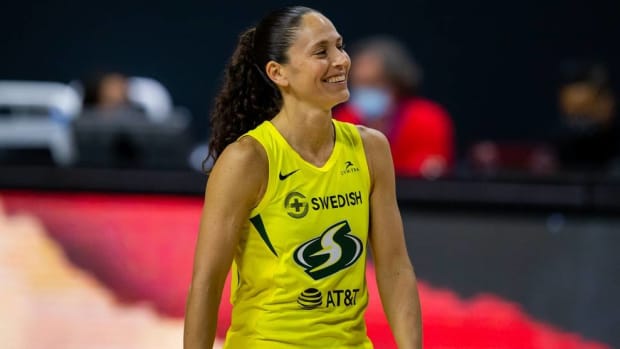New Data From The Fan Project Shows Women's Sports Have Most Innovative, Committed Fans
The demand for women’s sports is growing, but women’s sports fans and consumers already knew that.
The NWSL and WNBA were the only professional sports leagues in North America to experience increased TV ratings during 2020 amid the pandemic. Star athletes like Naomi Osaka and Serena Williams, celebrities and even NFL owners are investing in women’s sports teams. The Tokyo Olympics featured a record number of women participating, while consumers across the United States and Canada tuned in to watch women compete in prime time at higher rates than ever before.
Anglea Ruggerio is a Hockey Hall of Famer, Olympic gold medalist, and co-founder/CEO of Sports Innovation Lab, which does market research with clients like the NFL, NHL and FIFA, and focuses on how technology influences fan behavior. As a former athlete, Ruggerio knew there was a large investment gap between men’s and women’s professional sports, but there was little research devoted to the women’s sports industry that actually provided a reason why.
Her company’s latest initiative, The Fan Project, teamed up with 27 partners, including the WNBA, NWSL, LPGA and Women’s Sports Foundation, and asked for consumers' social media archives to analyze social and viewership data.
While brands have been using outdated metrics—like TV ratings—to judge whether it's worth investing in women’s sports, fans have been left to find their own ways to engage in digital communities and e-commerce over the last five years or so. In other words, by not investing in women’s sports, brands have been missing out on as much as five years of revenue by not engaging with these consumers.
Ruggerio knew that consumers of women’s sports were hungry for more content and digitally savvy, but she didn’t realize how advanced women’s sports fans are in the way they consume sports and engage with their teams, brands, and other fans.
The results showed that most women’s sports fans already exhibited behaviors of a fluid fan—a fan who is continuously evolving, open to change, and significantly impacted by technology. Sports Innovation Lab described the fluid fan as a new way to think about fan engagement and the path to growth for the entire industry.
“If I understand [women’s sports] fans, it’s the path to growth for all fans. Full stop. That’s super powerful,” Ruggerio said. “Even if you’re never going to invest in women’s sports, you have to pay attention to what we’re doing. Because they’re out there and they’re building these communities and monetizing sports in a new and different way.”
Angela Ruggerio spoke with GoodSport about the Fan Project, what brands and marketers can take away from the data, and the growth potential of women’s sports.
This interview has been edited for length and clarity.
GoodSport: Where did the idea of collecting social media data come from?
Angela Ruggerio: We use data and insights for all of our clients, so we said what if we asked fans to participate, rather than us go searching for and recognizing that there actually isn’t a lot of data out in the market today. So rather than using what's already out there, let's create a new data set but do it in a really creative way with this totally GDPR-compliant, anonymized [method] and work with partners to say, ‘Look if you care about women's sports, if you want more women's sports, you want more data to support further investment in women's sports, work with The Fan Project.' The concept of zero party data, we believe we're the first to do that. To ask fans to literally hand over their social media archives. It's a concept that we thought about last year and said it can be really powerful.
GS: What kind of data points or information do you gain from social media archives, and what was the public’s response when you started collecting this data?
AR: It was super positive. Fans said, 'We love what you're doing, we love women's sports.' There are a lot of diehard women's sports fans, but a lot of men too. Almost 50% of fans that participated were actually men. The response was also overwhelmingly positive in terms of our partners … I’m a team-sport athlete and that was the approach. It wasn’t what can Sports Innovation Lab do alone?; it’s what can we do collectively? Because collectively, it’s a big ask for you to download, and trust, and participate in this. But the response was very positive, both from our partners and from the fans in general that said we want to support anything that's going to increase the visibility of women's sports, and hopefully increase the investment to the sector.
GS: Could you talk about the community-based monetization model? Is this a model that's popular outside of the sports industry, or is this more of a new concept?
AR: If you think about Reddit communities and Twitch, there are platforms that have built up virtual communities, digital communities, and we're saying that sports is no different. We've always gone to sports for the community. You love being in the venue. You love having the water cooler talk about the same thing that everyone watched the night before. … Fans of women's sports are exhibiting these behaviors already, and there's a massive opportunity to unlock that again. What sports is originally intended for is bringing people together around certain topics, whether it's athletes and what they care about, whether it's national pride, whether it's local base support. … In some ways it’s totally new to think about it in this sector, but other sectors have already recognized that if we can build digital communities, we can monetize those communities differently. Again, it’s breaking away from the old model in sports of, ‘Oh, I got to sell tickets. I got to sell sponsorships, I got to sell my linear rights,’ and then everything else is like gravy.
We think women’s sports can leapfrog, so if you take a step back, sports is about community, and increasingly sports is moving into these digital communities. Women’s sports gets that. They’re going to spend more money on creating content outside of the game, making it more around the athlete as the influencer or the storytelling, so you're going to invest a lot more in production. You’re going to then distribute that content outside of just a traditional linear feed and you’re going to figure out new ways to engage and monetize.
GS: The fluid fan is a really interesting idea, especially how it’s emerged in women’s sports out of necessity. Has men’s sports and men sports leagues seen the fluid fan emerge from their own audiences?
AR: The fluid fan is about depth. It’s about understanding the digitally savvy fan. It’s about personalization, it’s about being there when they want, how they want. It’s the depth of engagement. Everyone talks about engagement and we’ve been able to break that fluid fan bucket up into these behaviors, a lot of this report is a behavioral analysis. Men’s sports fans are there, but the highest percentage or proportion of fluid fans are these fans of women’s sports.
So if 10% of your consumers—these diehard kind of fluid fans who are digitally savvy consumers—generate 50–80% of your revenue, well you should pay attention. It’s the cutting-edge consumer that you really need to understand. … The fluid fan is the path to growth. On paper you’re going to make your money in traditional ways, but you have to understand fluid fans already exist in men’s sports, but not to the degree that we’re able to actually see in women’s sports. Women’s sports fans are all fluid out of necessity. … If we actually wrap our heads around the fluid fan and recognize the disproportionate amount of fluid fans in the women’s market, we believe the industry will massively shift in this direction in the coming years.
GS: What can brands and marketers take away from The Fan Project’s report and apply to the name, image and likeness (NIL) deals they're working on within women's sports and with women NCAA athletes?
AR: I think it's a massive opportunity right now. One of the key findings in the report is this community-based model. Now that athletes are a key piece of that puzzle, between the social change, the technology change, and the fact that the athlete now is core in distribution. Core as in you’re gonna listen to Megan Rapinoe, you’re going to listen to the athlete and what they care about, and you’re going to go on their channels versus the NCAA or the school channel. You have this really interesting mix and dynamic. So the report basically says if the organization understands that and can empower the athlete, there's a big opportunity for them to sell merchandise, immediately build their own brand, and produce their own shoulder content.
The athletes that understand this and the universities that understand and know how to empower those athletes to make money off of their brand off of their NIL, I think will be a massive recruiting tool. … I think NIL is one going to allow female athletes who have the most visibility during their college days, and then get a spike during the Olympics, but they don’t have the pro leagues to depend on yet, use these market recommendations to build their brand and build more visibility. … This new model that we’re proposing is something that I hope the schools take away from this report, and sponsors and brands. When Visa named itself as an NWSL sponsor, they got this massive shift that we could measure. Customers are like if you sponsor women’s sports, I’ll buy more Budweiser, I’ll buy more Nike, I’ll buy more products that align with my values. And I think athletes, and women athletes in particular, can lean into that.
GS: What are some takeaways for professional women’s teams or leagues from the Fan Project report?
AR: There's demand. That’s clear. You got to understand the fans, which hopefully the report lays out, and do things differently. Produce more shoulder content. You saw what F1 did with their Netflix series [Formula 1: Drive to Survive]. The amount of increase in interest in that property because people suddenly get and understand [the sport]. The learning behavior was the No. 2 behavior that we saw. Fans just literally want to understand who the athletes are, what’s the context for the sport, what's the competitive dynamic like. They want to learn not just about the athlete, but what’s going on. They don’t get that shoved in their face like men’s sports. I live in Boston. I can’t help but know what the Patriots are doing everyday. I can’t avoid it. Women’s sports are the opposite. So co-watching was the number one behavior—figure out how to bring communities together. Twitch and the NWSL has done that beautifully. There’s technology out there that we study that can bring people together.
Teach your fans what’s going on, whether that’s more storytelling, more shoulder programming, or short-form, but give them more than just sport. When you approach your brands, your media partners, really lean into the research here. We’ve always said that fluid fans follow their values, and you saw that in the data. I’ll reiterate there was a 2,700% increase for Visa when they sponsored the U.S. women's national team. Over a 1,000% for Nike. You’ve got this massive qualitative punch now that when you engage with the right brands in the right ways with the right properties, there’s this beautiful opportunity. … It’s pushing people outside of their normal frame and just holistically I hope what this does is bring more visibility. You can monetize women’s sports today. You can sell more T-shirts, you should be doing things differently, but don’t copy the men. Because the men’s sports model in some ways isn’t working. Women’s sports has the opportunity to be the innovator, shake the mold to drive revenue today. It’s based on data and not just an opinion, which is really powerful and why we set out to do The Fan Project on behalf of the industry in a collective way. You should be excited about the results and be bullish on your property.
GS: How can male sports teams, leagues, and brands that cater to those sports include this women’s sports fanbase in their marketing and growth rather than siloing them off as a subsection of a certain demographic?
AR: It's integration. It's recognizing that fans of basketball want basketball. They want the men, they want the women, they probably want the NBA 2K. They love basketball, maybe that's the heart of it. While the NBA had higher viewership numbers last summer, 68% of our fans watched the NBA versus 82% of them watching a regular-season WNBA game. I just wanted to reiterate that data point because it blew my mind. They’re watching longer, they’re better fans if you will. They’re not leaving and you don’t have to try to hook them for the fourth quarter; they’re there almost the whole time for a regular-season WNBA game.
I’ve heard a lot of ‘Oh, we need to market to mothers and their daughters to sell women’s sports,’ and that’s not true. This is about everyone. I grew up playing hockey and I love the L.A. Kings, but if you had that rationale, you would never try to market to me, a young girl, or try to sell me an L.A. Kings jersey. But I was obsessed. Had I had women’s hockey as a professional league, I’m sure I would have loved men’s hockey, women’s hockey, I would have loved all of it. I would have consumed all of it. You see that in the Olympics. Everyone watches everything and you actually have a higher percentage of women in the U.S. watching NBC’s footage or stream. And that’s the single largest financial contributor to the Olympics. They write the biggest check overall. It tops all the other linear broadcast partnerships they have. So women in the U.S. are viewing and driving it. So don’t think of [women’s sports fans] as this separate, siloed, random [group]. But think of it as an organic whole if you want to build enterprise value. If you’re a league, or a team owner and you’re thinking about if you should add a women’s property because it’s the right thing to do and you have to do it, but you’re going to push it to the side and underinvest in it, you can’t expect to be successful. That’s what I want to emphasize again—women’s sports have to be treated differently and invested in appropriately and integrated. If you’re going to have shared sources and support, you have to be together.
Jacqueline LeBlanc is a contributor for GoodSport, a media company focused on raising the visibility of women and girls in sports.












